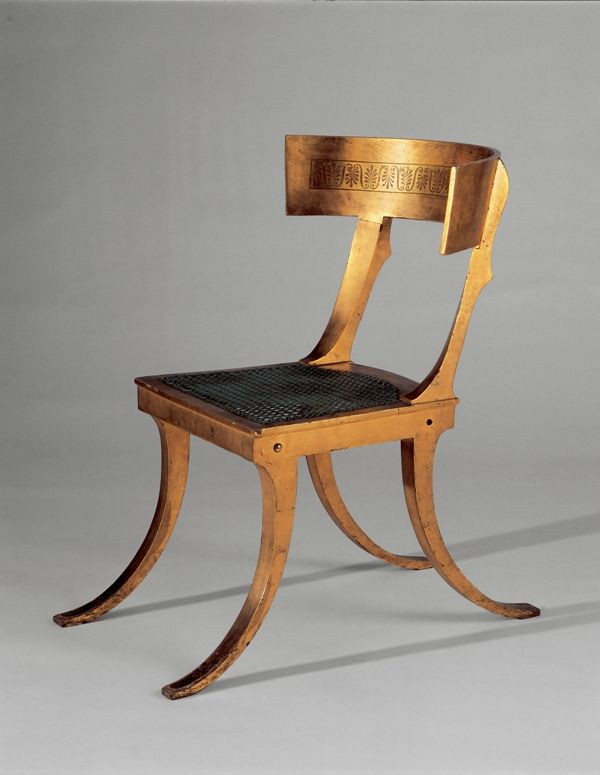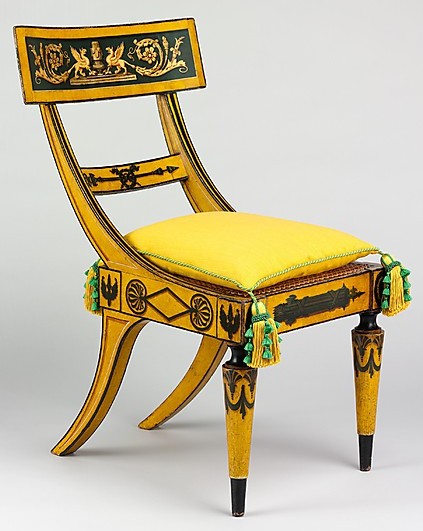
With the dugout chair complete and installed in the Lost Art Press Mechanical Library, I can move onto the next item on my long list of things I need to build before I die.
Next up is a Klismos chair, an elegant form of seating that emerged in Greece in the fifth century B.C.E. Its popularity as a form has waxed and waned as Classicism and Gothic have grappled through the centuries.

At times it has been interpreted as a study in form. It also has been carved, gilded and padded so as to be almost unrecognizable. The curve of its saber legs have been flattened to add stability. The backrest has been made smaller to make it easier to mass-produce. In fact, the only indignity it hasn’t suffered is to have been injection molded and sold at a Walmart.
My approach will be similar to that of Nicolai Abildgaard (1743-1809), the Danish painter, professor and sculptor who designed the chair shown at the top of this blog entry.
Researcher Suzanne Ellison and I went through a heavy “Klismos and Curule” phase together several years ago. That’s because my early drafts for “The Anarchist’s Design Book” had a large section that explored classical forms such as the Klismos and Curule and wove those forms into the long history of high and low styles. Then I realized I wanted to finish that book before my hair grew all the way down to my hinder. So I nixed that section (which could be a book in itself).
I’m returning to the Klismos because of one simple change in the world: I now have a reliable supply of cold-bend hardwood from Pure Timber. This stuff allows me to make extreme bends with a high level of accuracy and resulting strength.
But first I’ve got to get “Ingenious Mechanicks” to the printer (plus three other books that are almost complete). Oh, and some commission work so as to stave off ramen.
But it will happen in 2018.
— Christopher Schwarz, editor, Lost Art Press
Personal site: christophermschwarz.com